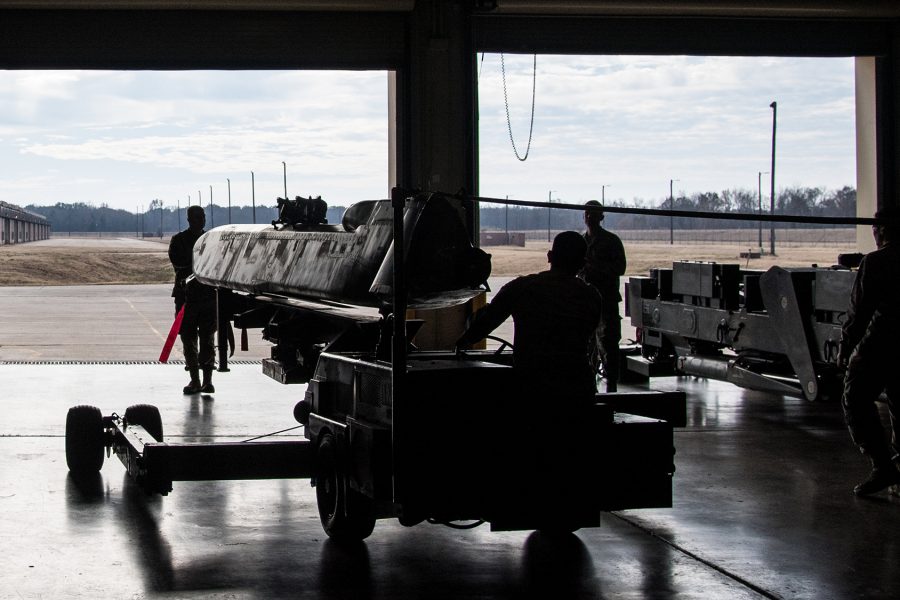The Air Force on Nov. 20 officially retired the Conventional Air-Launched Cruise Missile, a mainstay of long-range conventional strike since it entered service.
Airmen at Barksdale AFB, La., downloaded and disassembled the last CALCM package from a B-52 during a small ceremony that included retired airmen who worked with the missile, according to an Air Force Global Strike Command release.
The CALCM is based on the AGM-86B Air-Launched Cruise Missile, with its design stemming from the April 1986 raid on Libyan military facilities called Operation Eldorado Canyon. It was developed in secrecy with the goal of accurately striking targets at a standoff distance to protect the “shooters.” Boeing, the developer for the ALCM, redesigned the missile by removing its nuclear warhead and replacing it with a 1,000 conventional blast fragmentation warhead and GPS receivers.
The bombs were first used in combat in 1991, in the early stages of Operation Desert Storm. During that mission, named Operation Secret Squirrel, seven B-52s from Barksdale launched 35 of the missiles at Iraqi targets. The mission was the first time GPS was used to guide a missile to target, according to AFGSC.
With only a few of the missiles remaining in the inventory, Global Strike Command earlier this year officially retired the system. The service, in an August 2019 fact sheet, said 54 AFM-86D variants remained in storage at Barksdale awaiting demilitarization funding.
The move to retire the missile came as more advanced, long-range, stand-off weapons entered service, such as the AGM-158B Joint Air-to-Surface Standoff Missile-Extended Range, or JASSM-ER.
The Air Force is also developing the Long-Range Standoff weapon to replace the nuclear AGM-86B, which was the basis for the CALCM, with a possible conventional version to follow.
“We’re going to have a conversation about longer [range], more precise capabilities,” AFGSC boss Gen. Timothy Ray said earlier this year, explaining it was too early for a decision to be made on a conventional variant. “What I see as attributes of the LRSO would make the very good foundations for a conventional missile in the future. … That thinking is in play right now.”
The LRSO program has passed milestone B with possible full-rate production in 2022, though lawmakers have questioned the rationale for the program as a whole.
